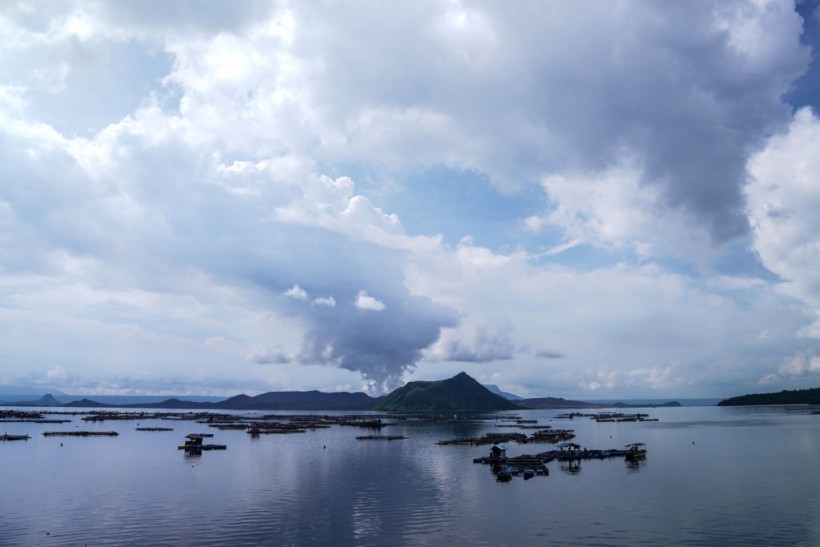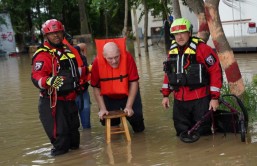
(Photo : Photo by Dante Dennis Diosina Jr./Anadolu Agency via Getty Images)
BATANGAS, PHILIPPINES - JULY 05: Smoke rise from Taal volcano in Batangas, Philippines on July 05, 2021. According to the Philippine Institute of Volcanology and Seismology (Philvolcs), Taal volcano can erupt anytime soon wherein more than 3,000 residents evacuated after the volcano started spewing steam, filling the air with toxic gas and prompting health warnings.
Health officials for the Philippines' Department of Health on Monday warned the public against going near the Taal Volcano after experts recorded the highest sulfur dioxide emission over the weekend.
Officials for the Philippine Institute of Volcanology and Seismology (PHIVOLCS) recorded 22,628 tonnes of sulfur dioxide emissions on Sunday, which was the highest level recorded in Taal Volcano in history.
Toxic Fumes
Exposure to sulfur dioxide can be harmful. High doses of the irritant can lead to pulmonary edema, bronchial inflammation, laryngeal spasm, and edema with possible airway obstruction, according to the Centers for Disease Control and Prevention's Agency for Toxic Substances and Disease Registry unit.
People who are exposed to sulfur dioxide are advised to take a bath or immediately wash areas exposed to the toxic substance, according to Dr. Voltaire Guadalupe, head of Calabarzon region's Head Emergency Medical Service.
Health experts also recommend wearing protective equipment to protect the eyes and skin from the toxic substance.
"Siguro mas maganda na 'wag natin papagpagin ang ating mga damit or other surfaces when we have been to areas with high sulfur dioxide emissions," he added, according to ABS-CBN News.
(It might be better if we avoid dusting clothes and surfaces when we have been to areas with high sulfur dioxide emissions.)
Read Also: Joe Biden Delivers Remarks in Celebration of Independence Day, Progress on the COVID-19 Pandemic
Philippine scientists also warned that the Taal volcano, which is considered the country's second most active volcano, could erupt soon following the "anomalously high" volcanic gas emissions.
Mass Evacuation Order
The Philippine government on Thursday last week has evacuated more than 3,000 residents living in high-risk villages surrounding the Taal volcano after it spewed volcanic gas and steam in the air.
Since Thursday, the volcano has regularly had bursts of volcanic gas and steam. The emissions were also accompanied by 26 strong low-frequency volcanic earthquakes, PHIVOLCS said in a bulletin.
"These observations may indicate that an eruption similar to the July 1, 2021 event may occur anytime soon," the institute said, according to Aljazeera.
The Taal Volcano is currently on alert level 3, which means the magmatic extrusion at the volcano's main crater may lead to explosions.
The Taal volcano last erupted on January 12, 2020, displacing more than 376,000 people who were forced to shelter in evacuation centers. The last eruption spewed red-hot lava, crushing scores of homes and killing livestock.
The volcano, which is the only known volcano located within a lake on an island, has erupted 33 times since 1572.
The Taal Volcano is the most lethal among the 21 active volcanoes in the Philippines. While deaths caused by the volcano were only recorded beginning 1754 onwards, officials say it has led to the deaths of at least 6,000 people.
In 1754, the volcano continued to erupt for at least seven months. It is unclear whether another eruption will last as long.
Taal is a volcano complex which consists of the Taal Lake. The lake is a collapsed remnant of a prehistoric volcano that stood at 6,000-meters tall.
There were many towns surrounding the lake during the 1th century. However, some of the towns now lie in ruin due to violent eruptions.
Related Article: Biden Administration Launches Process to Allow Deported Veterans to Return to the US, Committed to Those Unjustly Removed








